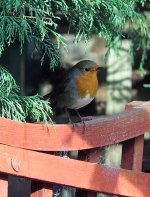Thronlv
In comparing the quality and cost of different lenses for telescopes an important consideration is the speed of the lens. The triplet sold by “great-eye” on e-Bay is f- 6.6. I am happy with the view from my f-7.5 80ED scope from Orion. I have attached an image from my first scope that was a fabricated 74mm f-8 achromat. The “IStar” site is selling quite a range of quality lenses in both quality specification and f-number. For example, people in astronomy many times prefer a large size achromat of perhaps 6 or 8 inches and speeds as low as f-12 or f-15 in order to get great magnification and sharp views. An Apo of that size would be many times more costly and offer little more in quality.
The reputation of the lens maker is also important. For example, the Jaegers Co. was well known for the quality of its lenses. Unfortunately their factory burned down in about 1970 and was not rebuilt. The lenses are still being sold however. I have a 4” f-8 that is about to be make into a scope.
Another consideration is if a lens cemented or air-spaced. The latter incorporates corrections for a flatter field that is not possible with a cemented lens. Of course good baffling is important in a scope to give contrasty views. Provision needs to be made for controlled collimation. Push-pull adjustment screws are fine. Some times they are provided in the mount. I suggest a collimation eyepiece such as sold by ScopeStuff. It has a frosted 45 deg. angle mirror to reflect outside light. Much easier to use than a laser.
So, in choosing a telescope lens be careful not to get one faster than the design allows for sharp seeing. The cost of the achromat used in the following digiscoped image was $10 from Surplus Shed, but I had to separate and re-cement it. Gene
http://www.PhotoShare.co.nz/PhotoShareGallery1/101684/109654/Q-EMa15B0171543_L.jpg





